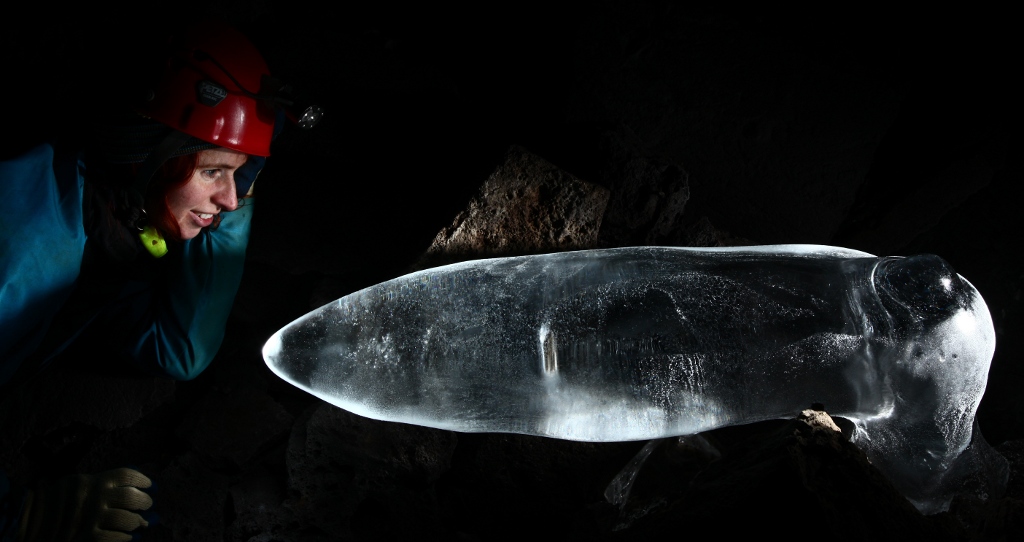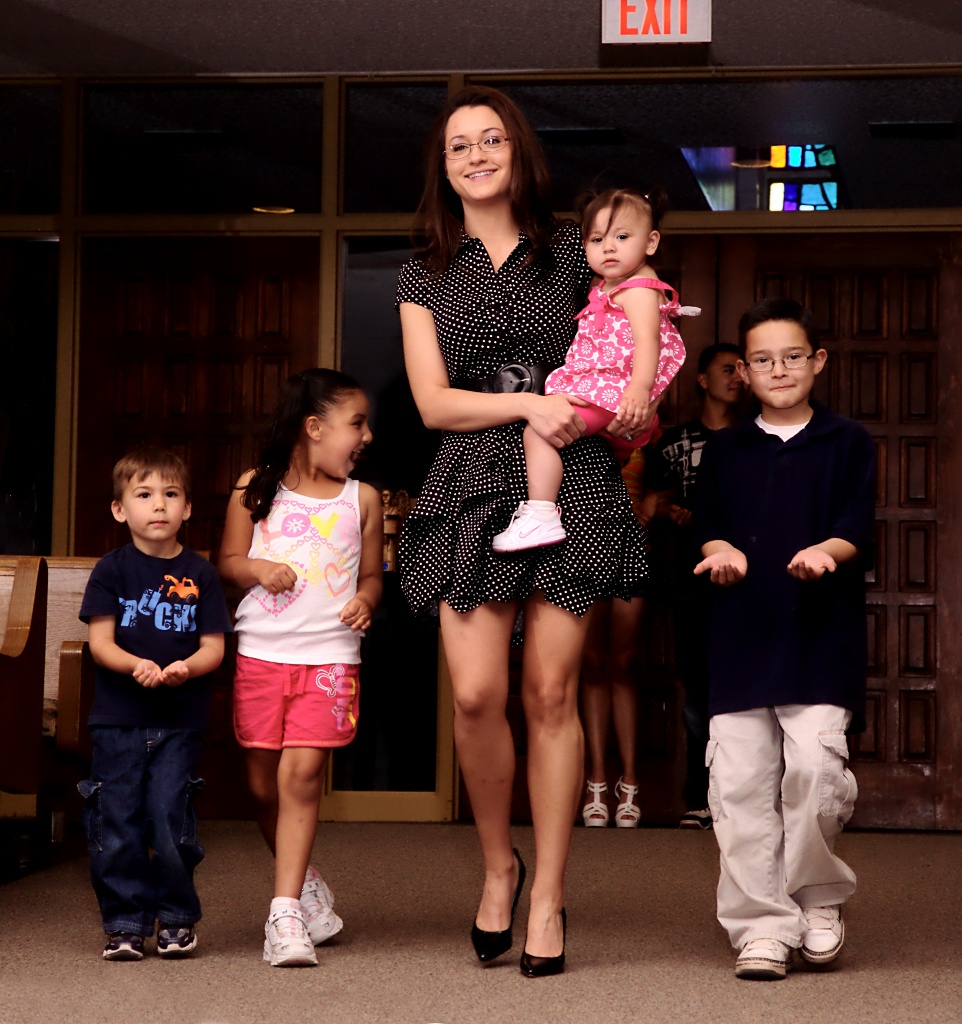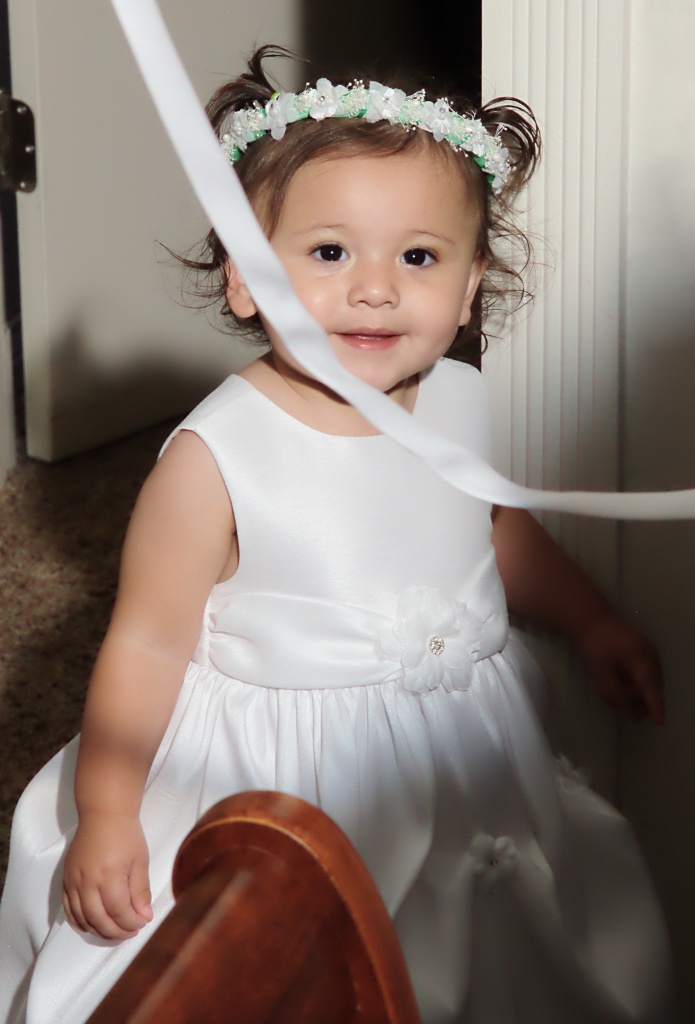
Lest you think I only talk about weddings, here’s a recent cave shot. I wanted a unique way to look at the ice formation. I put a medium grid on my flash, a Canon 580 EX II fired by a Pocket Wizard radio slave. An assistant is aiming it right down the formation, and the light on her face is the little spill from the fact that the grid is a medium one and light is also exiting the formation at various places. This was only the second place I had used a grid on the flash; I’ve not had it more than a few months. I have been experimenting with various light-modification devices, and, so far, they seem to be worth the weight and volume to carry them. They allow me to light the subject(s) with more control than just a flash by itself.
Caves are challenging places to take photos. On the hard side, you (and your helpers!) have to carry all of the light. On the other hand, you never have to wait for the “golden hours” of the day (just after sunrise and before sunset), because all of the light is completely under your control. Add in that they are beautiful (and, in this case, really cold!), and they are one of my favorite places to take photos.
Note added 2011-07-25: This photo received “Best in Show” at the 2011 national Speleological Society print salon and a blue ribbon (Merit Award) in the photo salon.

